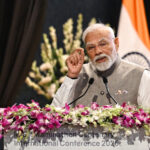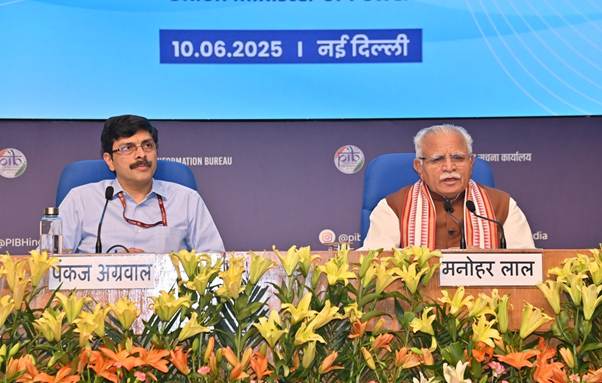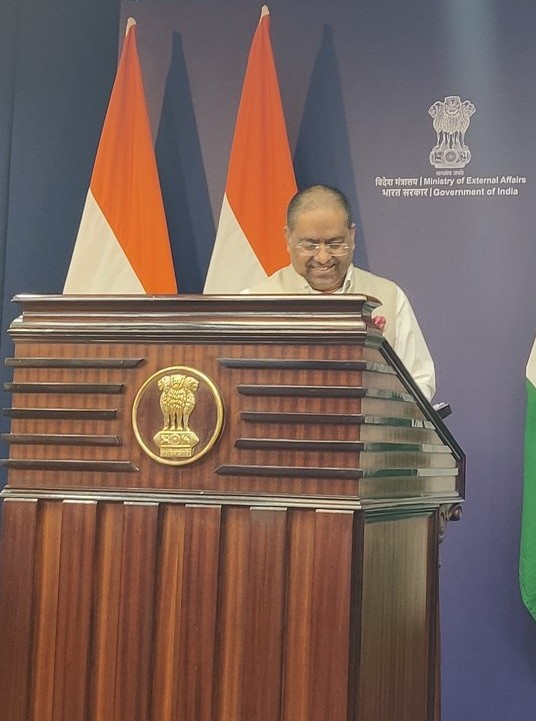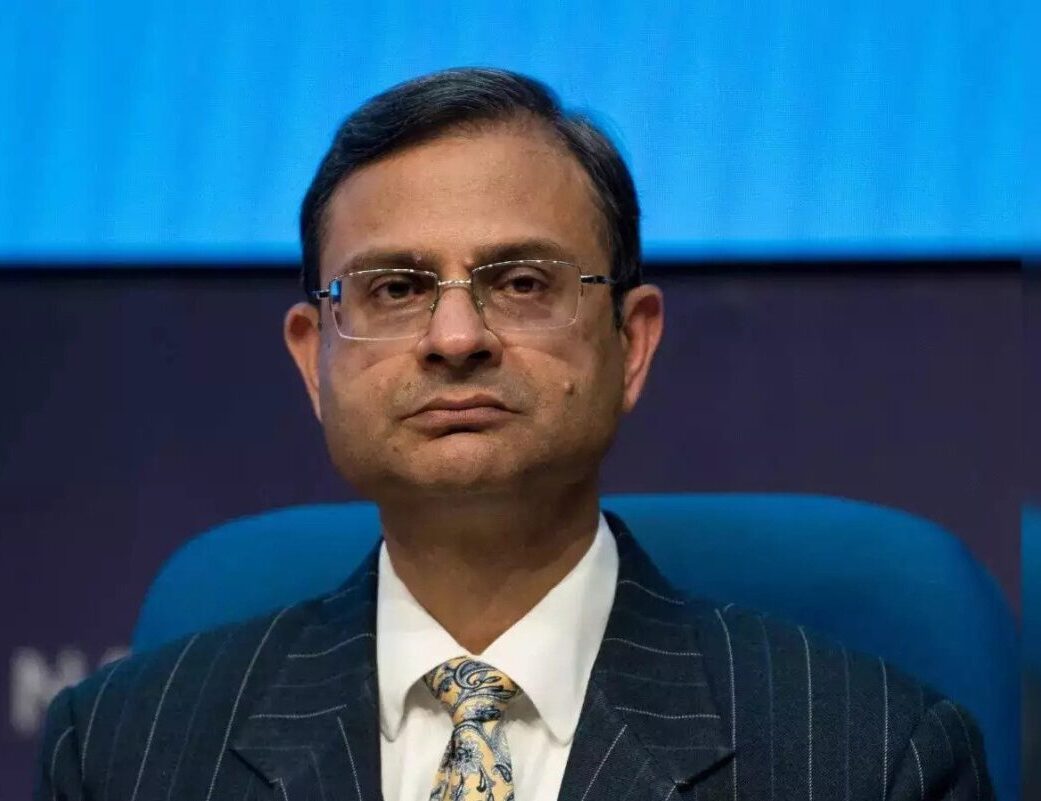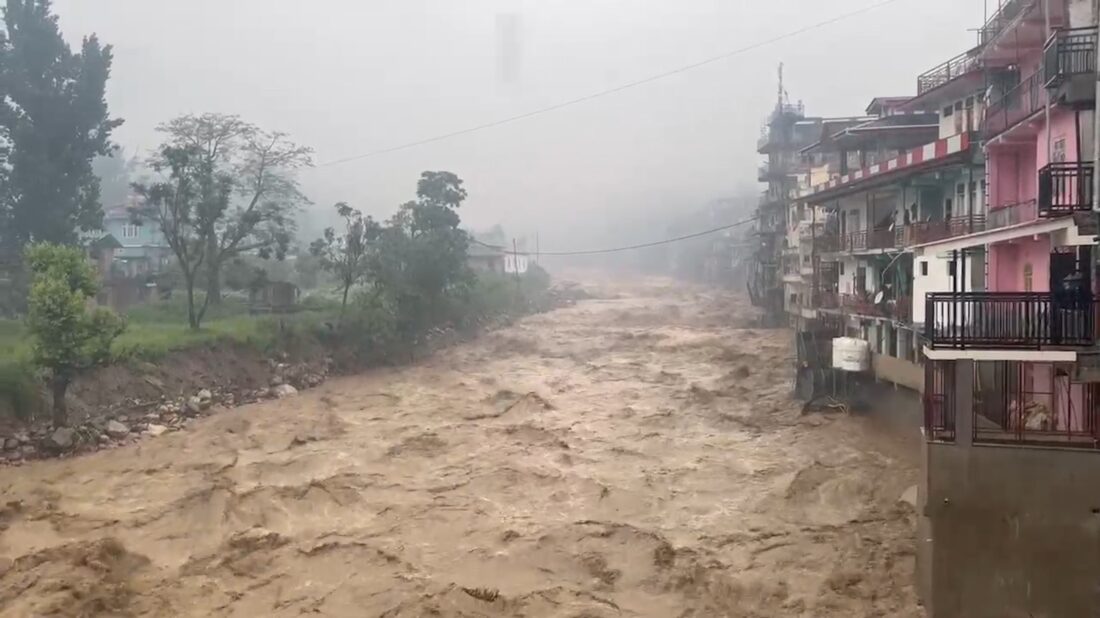The North News
New Delhi , June 11
In a sweeping overhaul of India’s energy policy, Union Minister Manohar Lal Khattar on Tuesday announced a new mandate requiring air conditioners to operate within a fixed temperature band of 20°C to 28°C. The move is aimed at curbing excessive energy use amid a surge in electricity demand and a series of punishing heatwaves gripping the country.
Speaking at a press conference in New Delhi, Khattar said, “A new provision is being implemented soon regarding air conditioning standards. The temperature standardisation for ACs will be set between 20°C and 28°C, which means we will not be able to cool below 20°C or heat above 28°C.”
The announcement forms part of a broader national effort to enhance energy efficiency and modernise India’s power infrastructure. Khattar also highlight what he described as “11 years of transformative growth” in the power sector, underscoring that India has moved from power scarcity to becoming power sufficient.
On 9 June 2025, India achieved a record peak power demand of 241 GW without any shortfall — a milestone that Khattar said “demonstrates the strength of our transmission systems and generation capabilities.”
In a further bid to strengthen the country’s energy resilience, the Ministry of Power has approved a Viability Gap Funding (VGF) scheme for 30 GWh of Battery Energy Storage Systems (BESS), supplementing 13.2 GWh already under development. The ₹5,400 crore scheme is expected to attract ₹33,000 crore in investment and fully meet the country’s BESS requirements by 2028.
To support storage projects, the central government has extended the waiver of Inter-State Transmission System (ISTS) charges until 30 June 2028. The waiver applies to Pumped Storage Projects awarded and Battery Energy Storage Systems commissioned before the deadline, and is expected to enhance flexibility and transmission line use.
Another major initiative is the introduction of an Ultra High Voltage Alternating Current (UHV AC) Transmission System — a first for India. Nine 1100 kV lines and ten substations have been identified for development by 2034. Testing facilities are being developed by the Central Power Research Institute, and the expected investment totals ₹53,000 crore.
Addressing long-standing land acquisition hurdles, the government has also revised compensation rates for transmission infrastructure. Compensation for tower areas has been raised from 85% to 200% of the land value, and the Right of Way corridor compensation has been doubled from 15% to 30%. The new guidelines, issued on 21 March 2025, have already been adopted by Delhi and Haryana.
Khattar also announced a key regulatory reform: the expansion of the Late Payment Surcharge (LPS) rules to cover Intra-State Transmission Systems. Previously applicable only to inter-state systems, the reform is expected to promote private investment and enhance the financial viability of state-level grids — critical for absorbing growing volumes of renewable electricity.
India added its highest-ever generation capacity in 2024–25 — a total of 34 GW, with 29.5 GW coming from renewable sources. As of now, the country’s installed power capacity stands at 472.5 GW, nearly doubling from 249 GW in 2014.
Notably, the Tehri Pumped Storage Project in Uttarakhand has begun operations with its first 250 MW unit, enhancing the grid’s ability to handle peak demand and integrate variable renewables.
India’s national energy shortage has been slashed to just 0.1% as of April 2025, down from 4.2% in 2013–14 — a sign, Khattar said, of the country’s evolution into a “power-secure and future-ready nation.”







